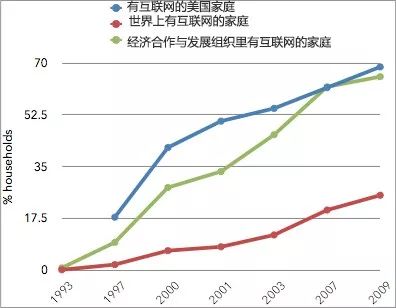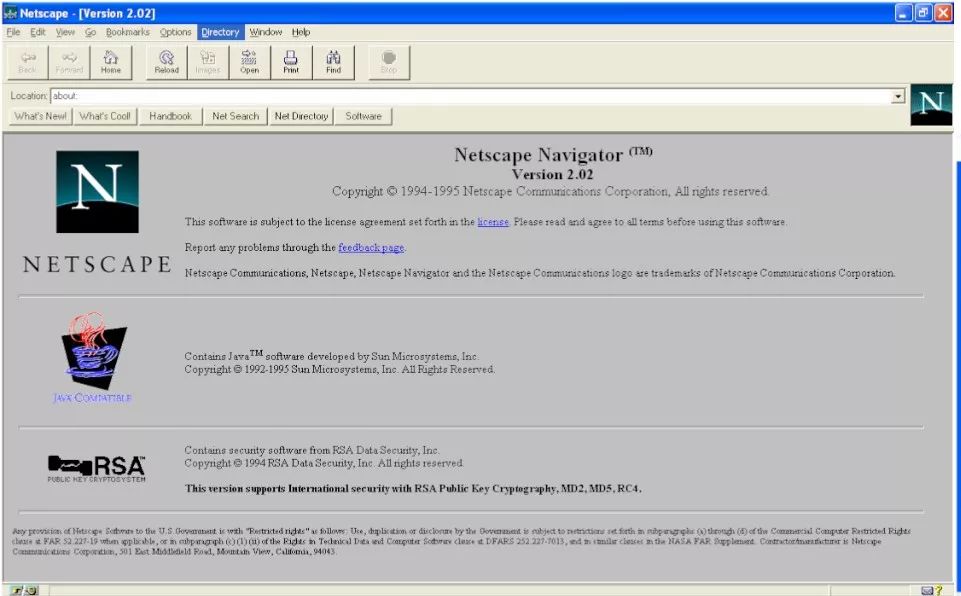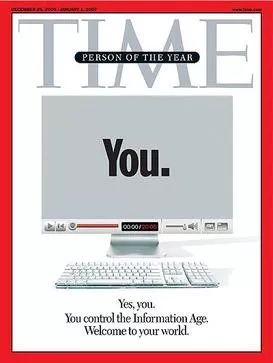The Revolutionary Potential of the Bitcoin Lightning Network from the Internet
From Aristotle (4th century BC) to Kant (18th century AD), almost every epistemologist has agreed that we learn by classifying and comparing world things. But the key to this behavior is not whether they can be compared, but what we can get from the comparison.
Although Lightning Network is a significant technology, we still know very little about him. Some questions still need us to understand: How does the number of LSPs required by Lightning Network change with the number of users? How does the complexity of the graph relate to the throughput of the network? What happens when the Lightning Network is used on a large scale? What does a Bitcoin-based lightning economy look like? How will this technology change our markets and society?
We are fortunate that another Internet technology, the Internet, is changing our society, bringing people closer together, living more efficiently, and providing us with unprecedented opportunities.
Perhaps the function and development of the Internet can help us understand the development direction, needs and changes of Lightning Network that can bring to our lives.
- Can the data be used as collateral in DeFi?
- Blockchain international patent TOP 20: 5 Chinese companies including Ali, Huawei entered the list
- A quick overview of the latest research and development progress of the Ethereum Foundation and the ecosystem team
1 change comes from an idea
Before comparing the Internet and the Lightning Network, we first describe them conceptually.
Both the Internet and the Lightning Network had conceptual descriptions before they officially appeared. We would like to thank JCR Licklider for creating the first Internet in 1962 and calling it the "Interstellar Computer Network." He envisioned "a set of globally connected computers that everyone can use to quickly access data and programs from anywhere." But perhaps different from popular perception, the Lightning Network originally appeared in the Bitcoin white paper.
This comparison makes sense because Licklider is talking about a network of technicians-not tools for large-scale utilities. He described it with compilers, sublanguages, and time-sharing protocols, "connecting at least four mainframe computers," or hubs. He described network infrastructure, not the Internet, as everyone knows. Similarly, although Nakamoto smartly described Bitcoin as "a pure peer-to-peer version of electronic cash that allows online payments …", this is not the case-due to the limitations of the blockchain So far, Bitcoin has been treated more as digital gold (a store of value) than as P2P cash that should have been.
But without Bitcoin as a solid foundation, there will be no Lightning Network.
2 From experts to the public: promotion and use of two networks
In the decades since Licklider's first paper was published, many people and institutions are working to translate his ideas into floor-to-ceiling technology.
The first WAN came into use in 1965, and four years later, the first host-to-host message appeared. Crucially, the basic transmission protocol of the Internet, TCP / IP, was tested in 1975 and adopted as the DARPA standard in 1980, and the number of Internet infrastructures is growing.
Still, not many people actually use the Internet. Its users are actually limited to developers, researchers, technicians, and experts. There are two reasons for this:
1. Most of the communication between these partners is carried out through RFC. RFC is a memo related to the operation of the network itself, which is usually shared with FTP. This is a far cry from the technology that can now be used on a mobile phone with an app.
2. The quality and quantity of available hardware is poor. In terms of quality, “when desktop computers first appeared, some people thought that TCP was too large and too complex to run on personal computers.” (Does it sound familiar? For example, the problem of moving full nodes?) In terms of quantity, it is 80 In the mid-1980s, fewer than 10% of American households owned computers.

(Source: U.S. Census Bureau)
This is similar to the situation of today's Lightning Network. But why: Although smartphones have a much higher penetration rate than computers in the early 1980s, they still cannot run a full Lightning Network node? However, computers have overcome the obstacles of TCP / IP within a few years, so why not increase the transaction speed of the full node?
Similarly, suppose we live in a town-sized “Lightning Community”. Many of us know each other and discuss the Lightning Network in expert channels such as GitHub, which is actually another form of RFC message board.
Most people have never heard of Lightning Network, let alone use it. We have a well-functioning network and solid basic protocols, but the revolution is yet to come.
3Looking for a killer to improve user understanding
In the early 1990s, Tim Berners-Lee developed and published HTML, which was the first step in the popularity of the Internet. This transformed the Internet from text-based media to open media. HTML is one of the important components of the Internet.
In addition to HTML, Berners-Lee and Nicola Pellow also developed the Internet's killer application: the web browser. The advent of web browsers has reduced barriers to entry. It is a point-and-click interface that allows users to get involved without having to understand its underlying protocol. Experts no longer transfer datasets and draft protocols via FTP, and people can order pizza from a clickable interface on a computer.
As a result, Internet usage has skyrocketed. It first became widespread in high-income countries and then spread worldwide. Starting from simple and practical operations, the Internet era has arrived.

(Source: U.S. Census Bureau and World Bank)
So, what is the killer of Lightning Network? The Lightning Network is a Bitcoin-based payment network. Therefore, its killer application must be able to make Bitcoin transaction costs lower, simpler operations, faster transactions, and more intuitive display of the user interface without compromising its technical integrity. This means a seamless user experience and a private, peer-to-peer, secure, decentralized, real-to-Bitcoin foundation. We have taken a huge step on this path.

Two killer apps are still in their infancy. "If I look further, it's because I'm standing on the shoulders of giants." (Source: Wikipedia)
Another similarity is the rise of service providers. From the 1980s to the 1990s, ISPs evolved from basic e-mail exchanges to accessible platforms that provided a range of services. Now we are also seeing the rise of Lightning Network Service Providers, who provide a range of services to help users connect with each other.
So where is the large-scale application?
Perhaps missing are phenomenon-level use cases to cause geometric-level network effects. I mean, of course everyone already has to make transactions and transfers, and there are already nice, user-friendly applications. But Lightning Network is still new to everyone. These news killer use cases may come from Lightning Network's current add-on capabilities and gradually evolve into broadly appealing major use cases, such as private messaging. It may come from the microeconomic decisions of global retailers, or it may come from macroeconomic shocks, which exacerbates the significance of Bitcoin's advantage.
Bitcoin is likely to replace or become fiat currency and become the world's preferred trading medium. We just can't really predict which snowflake will cause the avalanche and when.
4 Focus on people and increase user engagement
Another huge change dates back to 2006. That year, Google acquired YouTube, making it a regular web app, Facebook opened membership to adults and teens around the world, and Time magazine announced "You" as the person of the year. The Web has officially entered the development phase, which is what we called the Web 2.0 era.

The Lightning Network can also promote an individual-centric economy . In this way, all payments in life can be P2P, crowdfunding can replace investment banks, and inflation will no longer devalue public debt and private savings. The amount of bitcoin available to individuals may vary, but the quality of their economic participation will no longer differ. Everyone is on a level playing field, and everyone can use the same equipment for gaming.
Just as important as Web 2.0 is that smartphones became mainstream in 2006, with BlackBerrys everywhere, popular Nokia phones, and upcoming iPhones. Since 2006, the Internet has become ubiquitous, and the public has been involved. It is no longer just a network program, it has become an integral part of people's real life.
Of course, the development of Lightning Network still has a long way to go, and it is difficult for us to imagine what its future will be. For example, this is what a Canadian dollar bill looks like in 1954:

(Source: Canadian Online Banknote Museum)
This is what the last two versions of the $ 20 bill look like:

(Source: Evan Bench)
The same lady, Queen Elizabeth, these three banknotes span 65 years. The same is true for most of the rest of the Commonwealth. In other words, nearly a third of the world's people don't remember the appearance of money if they can't see the face of the queen. For 2.25 billion people and three generations, Queen Elizabeth has always been synonymous with banknotes, and it's strange not to put her portrait in a wallet.
In order to achieve comparability, Lightning Network should not only become the preferred payment method, but also seek public approval to make everyone think that it is strange to use anything other than this. This is the first step that the public needs to accept. When billions of people integrate Lightning Network into real life, such as traffic lights and comfort foods, a consensus is formed.
5 Summary
By comparing the development of the Lightning Network with the history of the Internet, we can see that:
1. Lightning Network has come a long way in realizing Satoshi's vision for Bitcoin.
2. The focus has shifted from pure technical possibilities to user experience optimization.
3. We are still waiting for phenomenal applications or phenomenon-level use cases to cause geometric network effects. Both positive and negative impact are reasonable catalysts.
4. Large-scale applications may only be an intermediate goal, not an ultimate goal. Perhaps the real destination of the Lightning Network is a world in which we must explain to our children what banking and inflation are, and how we can transfer funds without the Lightning Network.
Original link:
https://medium.com/breez-technology/comparing-two-revolutionary-networks-lightning-and-the-internet-d6043768e217
We will continue to update Blocking; if you have any questions or suggestions, please contact us!
Was this article helpful?
93 out of 132 found this helpful
Related articles
- DeFi company Zerion receives 2 million seed funding to create Coinbase in DeFi
- Hainan Blockchain Pilot Zone officially released "Six Chains" to promote blockchain technology into the mainstream
- Do MimbleWimble, Litecoin is serious! Foundation plans to raise $ 72,000 to fund developers
- How will the public chain break the game in 2020? The project party answered these 3 questions
- Xinhuanet: "Frying Coins" and "Mining" Are Popular Again, Beware of Financial Scams Wearing Blockchain "Vests"
- Why is it difficult for even BAT to participate in the competition of blockchain technology?
- What is the experience of the two girls traveling without cash and paying only cryptocurrency for almost half of the country?





